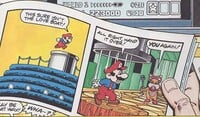Super Mario Bros. (Valiant Comics)
| Super Mario Bros. | |
|---|---|
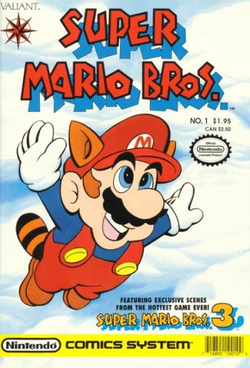 Cover of the Super Mario Bros. No. 1 heavy stock issue | |
| Writer | Various |
| Artist | Various |
| Publishers | |
| Labels | |
| Original language | English |
| Translations | Danish1 Finnish2 French German Norwegian1 Brazilian Portuguese Swedish1 |
| Issues | 54 (20 original, 34 foreign) |
Super Mario Bros. is a comic series featured as part of Valiant Comics' Nintendo Comics System brand. Running from 1990 to 1991, the comics include stories based on the Super Mario franchise. Of all of the properties featured under the Nintendo Comics System brand, Super Mario Bros. was the most prolific and the longest-running.
Overview[edit]
The premise of the Super Mario Bros. comics, set up by the introductory story "The Legend", follows the basic plot of Super Mario Bros.: the peaceful Mushroom Kingdom is invaded by the evil forces of King Koopa. Hearing the inhabitants' cries for help, two plumbers named Mario and Luigi, who work at their plumbing business in Brooklyn set out for adventure, defeating King Koopa and restoring the kidnapped King Toadstool and Princess Toadstool to the throne. Hailed as heroes by the Mushroom Kingdom's denizens, Mario and Luigi decide to stay behind as its protectors, knowing that King Koopa will not accept his defeat.
From there, the comics have no overarching storyline. The stories feature Mario, Luigi, Toadstool, and Toad foiling plots by King Koopa and other villains to conquer the kingdom (often involving kidnapping the scatterbrained and dimwitted King Toadstool or the Princess), and sometimes getting into mischief during their downtime. Stories generally are comedic in nature, with plots such as King Koopa developing a bomb that makes all those who inhale its fumes dimwitted, or Luigi and Toad participating in a bowling tournament played with oversized meatballs; humor in the form of visual gags and puns, as well as occasional references to American pop culture, are also present. Primarily drawing on the settings and characters of the platformers up to Super Mario Bros. 3, the comic's cast is rounded by a number of original characters, including the king's beleaguered advisor Wooster, the neurotic lovestruck Stanley the Talking Fish, and Mario's superhero idol Dirk Drain-Head.
The issues have the regular comics broken up with one-off pages. These one-page stories feature pin-ups, exposition, visual humor, and insight about the comic's characters.
Publication history[edit]
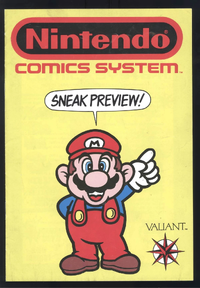
According to an info page in Nintendo Comics System No. 1, Valiant's deal with Nintendo was announced at a January 1989 conference in New York. Artists drew the story "The Fish That Should've Gotten Away" live for the press, making it the first comic produced for the line.[1]
On January 1, 1990, an 8-page sneak preview featuring various pages from the upcoming comics and ultimately unused art was published.[2] This was the first comic issue published by Valiant, predating the company's wrestling and self-owned superhero titles.[citation needed]
The Super Mario Bros. comics were first published in 1990 as heavy stock under the Nintendo Comics System label, which featured comics from other Nintendo Comics System comic series such as The Legend of Zelda, Punch-Out!!, and Captain N.[3] Following the end of this label after two issues, these comics were then published in their own series, under the label Super Mario Bros., which lasted for six issues, debuting with its first issue, Super Mario Bros. Special Edition No. 1. These issues use the classic Super Mario font for writing Super Mario Bros.
Starting in February 1991, the comics switched to a soft cover format, which was published monthly.[4] This incarnation lasted for five issues, and it debuted with its first issue, Super Mario Bros. No. 1. At the same time, the comics were also published under the label Adventures of the Super Mario Bros., also in a soft cover format. This label also featured stories from the Captain N comic series and lasted for nine issues, debuting with its first issue, Adventures of the Super Mario Bros. No. 1. While the soft cover issues of Super Mario Bros. continue using the classic Super Mario typeface for writing Super Mario Bros. like its heavy stock incarnation, the Adventures of the Super Mario Bros. issues instead use the typeface from the in-game logo of the game Super Mario Bros.
The comics were also featured as part of the fifth issue, sixth issue, eighth issue, and ninth issue of the Nintendo Comics System featuring... comic series, which featured comics from a certain comic series of the Nintendo Comics System, mainly Game Boy and Super Mario Bros.
Several hardcover collections of the Super Mario Bros. comics were also published. The Best of the Super Mario Bros., published on September 16, 1990,[5] contains most comics under this label, though The Best of the Nintendo Comics System features the comic "Just Deserts." Several issues of the Valiant Illustrated Action Books series were also published, including Super Mario Bros.: Meet the Koopa Kids, Super Mario Bros.: Battle Against Bowser, and Super Mario Bros.: Mario's Special Powers, all published in 1991.[6][7][8] Super Mario Bros.: Mario's Special Powers also features an original story not published in any other issue, "Tanooki Suits Me."
Additionally, a hardcover collection by Random House was published in 1991.[9] This collection comes with an audio cassette that features voice acting for the characters and narration.
Characters[edit]
| Name | Description |
|---|---|
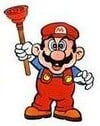 Mario |
Mario is the main protagonist of the Super Mario franchise. Along with his brother Luigi, they work together to foil the plans of the evil King Koopa. In the comics, Mario is obsessed with reading Dirk Drain-Head, a plumbing superhero who is his idol. |
 Luigi |
Luigi is Mario's younger but taller brother. He, along with Mario, work together to foil the plans of the evil King Koopa. |
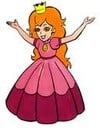 Princess Toadtsool |
Princess Toadstool is the de facto ruler of the Mushroom Kingdom. While her father King Toadstool is the de jure ruler, he is scatterbrained and dimwitted, so she often performs his royal duties as the de facto ruler. In the comics, she is shown to be fan of the comic Baroness Blue Blood. |
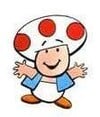 Toad |
Toad is the main page of Princess Toadstool, the de facto ruler of the Mushroom Kingdom. He is also seen helping Mario and Luigi foil the plans of the evil King Koopa. |
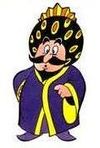 King Toadstool |
King Toadstool is the de jure ruler of the Mushroom Kingdom. Despite this, he is depicted as scatterbrained and dimwitted, so his responsible daugher Princess Toadstool performs his royal duties as the de facto ruler. Wooster, the king's personal servant, is occasionally at odds with him due to his lack of intelligence. |
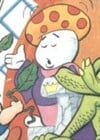 Wooster |
Wooster is King Toadstool's chief adviser, worrying a lot about him. He is very polite and helpful, but can occasionally be irritated by him due to his lack of intelligence. |
 King Koopa |
King Koopa is the main antagonist of the Super Mario franchise. In the comic, he is often seen trying to take over the Mushroom Kingdom or cause trouble for Mario and his friends. He is the apparent owner of the Apook Corporation, a corporate conglomerate that sells products to most of the Mushroom Kingdom. |
Comics[edit]
Short stories[edit]
- "The Legend"
- "Dear Princess Toadstool"
- "Koopa's Health and Beauty Tips"
- "Koopa's Believe It or Else!"
- "Mario Bros. Museum of Plumbing"
- "Koopa's High School Yearbook"
- "Fryguy High Yearbook -- Activity Page!"
- "Family Album 'The Early Years'"
- "Koopa-Kola"
- "In the Swim! Fun and Sun Fashions"
- "Get Koop-ed Up With the Nicest People"
- "Koopatone"
- "Family Album: Summer Camp"
- "Kitchen Kraziness"
- "Public Service Announcement"
- "The Mario Bros. Guide to Grooming Your Moustache"
- "Throne Out"
- "Weight Up"
- "Toad's House"
Full stories[edit]
- "The Fish That Should've Gotten Away"
- "Mutiny on the Fungi"
- "A Mouser in the Houser"
- "Just Deserts"
- "The Adventures of Dirk Drain-Head"
- "You Again?"
- "Piranha-Round Sue"
- "Cloud Nine"
- "Magic Carpet Madness"
- "The Kingdom Enquirer"
- "Bedtime for Drain-Head"
- "Love Flounders"
- "Betrayal Most Proper"
- "Beauty and the Beach"
- "Fins and Roses"
- "Duh Stoopid Bomb!"
- "Cloud Burst"
- "The Buddy System"
- "It's Always Fair Weather"
- "Elect Mario for Man of the Year"
- "The Revenge of Pipe Ooze!"
- "Minor Defects"
- "The Doctor Is In... Over His Head"
- "Bowser Knows Best"
- "Tanooki Suits Me"
German-exclusive[edit]
- "Besuch vom anderen Stern"
- "Der sprechende Abfluß"
- "Die Mario-Brüder und der Super-Sauger"
- "Die unglaubliche Erfindung"
Releases[edit]

- Main article: List of Super Mario Bros. (Valiant Comics) releases
There are a total of 70 releases of the Super Mario Bros. comics, 72 if including Nintendo Comics System: Sneak Preview! and Super Mario Bros. Special Edition No. 1. Of these releases, 33 of the releases are for the original version of the comic, while 39 of the releases are for the foreign versions of the comics. Of the 33 releases of the original version of the comic, six are the heavy stock issues of the comics, while fourteen are the soft cover issues of the comics. Of the fourteen soft cover issues, five are labeled under the Super Mario Bros. title, while nine are labeled under the Adventures of the Super Mario Bros. title.
Three hardcover collections were released for the comics: The Best of the Nintendo Comics System, The Best of the Super Mario Bros., and Super Mario Bros. Adventures. Three Valiant Illustrated Action Books were also released, namely Super Mario Bros.: Meet the Koopa Kids, Super Mario Bros.: Battle Against Bowser, and Super Mario Bros.: Mario's Special Powers.
The remaining seven releases are Nintendo Comics System issues that feature Super Mario Bros. comics alongside other comics under the label. Three are the Nintendo Comics System issues, which includes Nintendo Comics System: Sneak Preview!, a sneak preview of upcoming comics that would be featured under the label. The remaining four releases are the Nintendo Comics System featuring... issues which feature the Super Mario Bros. comics as the main focus of the issue; the issues that feature the Super Mario Bros. comics include Nintendo Comics System featuring Super Mario Bros. No. 5, Nintendo Comics System featuring Super Mario Bros. No. 6, Nintendo Comics System featuring Super Mario Bros. No. 8, and Nintendo Comics System featuring Super Mario Bros. No. 9.
Of the 39 foreign releases of the comics, four are the issues of the Brazilian version of the comics, Super Mario Bros. em Quadrinhos, seventeen are the issues of the French version of the comics, Super Mario, and 13 are the issues of the German version of the comics, Super Mario Bros. Video-Comic-Magazin. The French version also includes a hardcover collection, Super Mario Bros., which includes all of the comics featured in the first four issues of the version.
Staff[edit]
- Main article: List of Super Mario Bros. (Valiant Comics) staff
Super Mario Bros. had a highly variable stable of writers and artists, leading to a somewhat inconsistent visual style. Some recurring writers and artists include George Caragonne, Janet Jackson, Ken Lopez, Mark McClellan, Art Nichols, Bill Valely, John Walker, and P. Zorito.
Pre-release and unused content[edit]
In Game Boy No. 3 and No. 4, what appears to be an unused comic featuring Mario entering an Airship to retrieve Wendy's magic wand appears as an advertisement for the Nintendo Comics System. In the comic, Mario is seen jumping into a Warp Pipe leading into the interior of the Airship, with him commenting that it is clearly not the love boat. Landing inside the airship, Mario demands Wendy to hand over her wand to him, with her commenting that she has seen him. With her in refusal, Mario decides to take the wand from her the hard way, with Wendy in shock. The scene of Mario entering the inside of the Airship through the Warp Pipe as Wendy spots him is also used as basis for the cover art of the Valiant Illustrated Action Book Super Mario Bros.: Meet the Koopa Kids.
References to other media[edit]
- King Koopa's design is mostly borrowed from The Super Mario Bros. Super Show!, with the exception of "Just Deserts," where he is drawn more faithfully to his modern design, though he still has a mainly green color scheme and wears a crown. The Trouters' design and behavior are also borrowed from the show.
- Mario Bros. Plumbing, which originated from The Super Mario Bros. Super Show!, reappears in "The Legend." It is also the main setting for the German-exclusive stories of Super Mario Bros.
- In "Beauty and the Beach," Mario is shown to be the owner of a sailboat named The Spirit of Flatbush, alluding to Mario and Luigi's hometown of Flatbush in the show.
- In "Die Mario-Brüder und der Super-Sauger," while being forced to use the Super-Sauger on a sewer by Shredder, Mario explains that he and Luigi need a twenty-minute break, as their show, The Super Mario Bros. Show! begins now, before explaining the general format of an episode for the show. Later, at the end of the story, the narrator mentions that them taking a break not only meant that their second appearance on the show was a success, but was also a rescue for the Teenage Mutant Ninja Turtles.
- Additionally, the show is also alluded to on the cover of every issue except the first issue, where a caption mentions that the Super Mario Bros. comic series is an extension of Super Mario Bros. and The Super Mario Bros. Super Show!
- Wart is shown to be the owner of Snooze World, a mattress store, which is a homage to Subcon, which he attempts to conquer during the events of Yume Kōjō: Doki Doki Panic and Super Mario Bros. 2.
- One of Stanley the Talking Fish's girlfriends, Bertha, is a reference to "Big Bertha," one of the original names for the Big Cheep Cheep.
- The cover of Super Mario Bros. Video-Comic-Magazin Nr. 12 features Cape Mario and Yoshi, who originated from this game.
References in later media[edit]
- The scene where the Mario Bros., the Princess, Wooster, the Shyguys, and the Beezos leave the Mushroom Castle and enter the Mask Gate to Koopa's castle is reused as part of the cover art for The Super Mario Bros. Super Show! Taiwanese VHSes Chāojí Mario 5: Mario Dàzhàn Koopa and Chāojí Mario 9: Mógu Kāiguóshǐ.
- The back cover of Super Mario's Adventures features Wart chasing Mario with the design he has in this series, but recolored to resemble Bowser.
Gallery[edit]
- For this subject's image gallery, see Gallery:Super Mario Bros. (Valiant Comics).
Translations[edit]
The Super Mario Bros. comic series was translated into French, German, and Brazilian Portuguese, under the titles Super Mario, Super Mario Bros. Video-Comic-Magazin (originally Super Mario Bros. Comic-Magazin), and Super Mario Bros. em Quadrinhos, respectively. The French version of the comics, Super Mario, was the longest running foreign version of the comics, running for seventeen issues and first published by Éditions de Tournon in 1992.[10] The French version of the Super Mario Bros. comics was originally labeled under the title Le Journal Nintendo. The first two issues only featured Super Mario Bros. comics, though starting with the third issue the version also included the Game Boy comics. The version continued to be released under the Le Journal Nintendo until the seventh issue, where the version was retitled Super Mario, which remained for the rest of the version. The comic also began featuring comics from The Legend of Zelda from this issue onward. The comics featured in the first four issues of Le Journal Nintendo were later compiled in the book Super Mario Bros., released by Glénat in 1992 under the Comics USA label.[11] Each issue of Super Mario features one or two full stories from the original version of the comics. With the exception of "The Legend," the short stories appearing in the original version of the comic do not appear in any issue of the French version of the comic.
The German version of the Super Mario Bros. comics, the Super Mario Bros. Video-Comic-Magazin, was the second-longest foreign version of the comics, running for thirteen issues and published by Condor-Verlagsgruppe from 1991 to 1993.[12][13] The first five issues consisted only of Super Mario Bros. comics. However, starting from the sixth issue, comics from The Legend of Zelda comic series were also included, with comics from Captain N: The Game Master being included starting from the ninth issue, each given their own section in the issues. All comics in the German version were translated by Harald Seemann. All comics in the German version also take place in Videoland (the setting of Captain N: The Game Master), with notable examples such as the German title for "Public Service Announcement" ("Bekanntmachung – direcht aus dem Palace of Power", "Announcement – direct from the Palace of Power"), and Wendy saying that she is an inhabitant of Videoland in "Fins and Roses." The Super Mario Bros. Video-Comic-Magazin also features several original stories not found in the original version, which include "Besuch vom anderen Stern," "Der sprechende Abfluß," "Die Mario-Brüder und der Super-Sauger," and "Die unglaubliche Erfindung," all of which formatted as Plumber's Log entries and revolve around Mario and Luigi working at their plumbing workshop, in reference to The Super Mario Bros. Super Show! The Super Mario Bros. Video-Comic-Magazin is the only foreign version of the comics to include both interstitial pages and short stories from the original version of the comics.
In the Brazilian Portuguese version, only Super Mario Bros. comics were included throughout its run. while The Brazilian Portuguese version of the comics, Super Mario Bros. em Quadrinhos, was the shortest of the foreign versions of the comics, only running for four issues and published by Multi Editora in 1991.[14] Though the version includes short stories from the original version of the comic like the Super Mario Bros. Video-Comic-Magazin, Super Mario Bros. em Quadrinhos does not include any interstitial pages from the original version of the comic. Super Mario Bros. em Quadrinhos is the only foreign version of the comic to exclusively feature Super Mario Bros. comics.
While not receiving their own comic series in these languages, Finnish, Danish, Norwegian, and Swedish translations of the Super Mario Bros. comics also appear as sections of the Nintendo-lehti and the Nintendo-Magasinet, Nintendo's magazines for Finland and Denmark, Norway, and Sweden, respectively.
Names in other languages[edit]
| Language | Name | Meaning | Notes |
|---|---|---|---|
| French | Super Mario[15] | - | |
| Le Journal Nintendo[10] | The Nintendo Magazine | first six issues | |
| German | Super Mario Bros. Video-Comic-Magazin[12] | Super Mario Bros. Video Comic Magazine | |
| Super Mario Bros. Comic-Magazin[12] | Super Mario Bros. Comic Magazine | first issue | |
| Portuguese (NOA) | Super Mario Bros. em Quadrinhos[14] | Super Mario Bros. in Comics |
Footnotes[edit]
1 - Never published as its own series; published in the Nintendo-Magasinet.
2 - Never published as its own series; published in the Nintendo-lehti.
References[edit]
- ^ Nintendo Comics System Book Collection
- ^ Nintendo Comics System Sneak Preview (1990) Prices. PriceCharting. Retrieved October 7, 2025.
- ^ Nintendo Comics System Book Collection
- ^ https://web.archive.org/web/20220407185406/http://catfish.it.cx/trsrockin/trsrockin.com/ncs.html
- ^ https://www.amazon.com/Best-Super-Mario-Brothers/dp/0792455304
- ^ https://www.amazon.com/Super-Mario-Bros-Meet-Koopa/dp/0307218716
- ^ Super Mario Bros Battle Against Bowser CGC 9.6 White Pages Valiant 1991 Nintendo
- ^ https://www.amazon.com/Super-Mario-Special-Powers-Golden/dp/0307218740
- ^ Super Mario Bros. Nintendo COMIC BOOK & CASSETTE NEW IN Plastic
- ^ a b LE JOURNAL NINTENDO - N°1 - MENSUEL - 2 BD de Mario, jeux, .
- ^ Bd super mario bros Nintendo numéro 1
- ^ a b c Super Mario Bros. Video-Comic-Magazin
- ^ ✪ SUPER MARIO BROS. COMIC-MAGAZIN #13, Condor/Nintendo 1993 COMICHEFT Z2
- ^ a b Super Mario Bros. n° 1
- ^ Super Mario magazine n°7 bd Mario et Zelda
